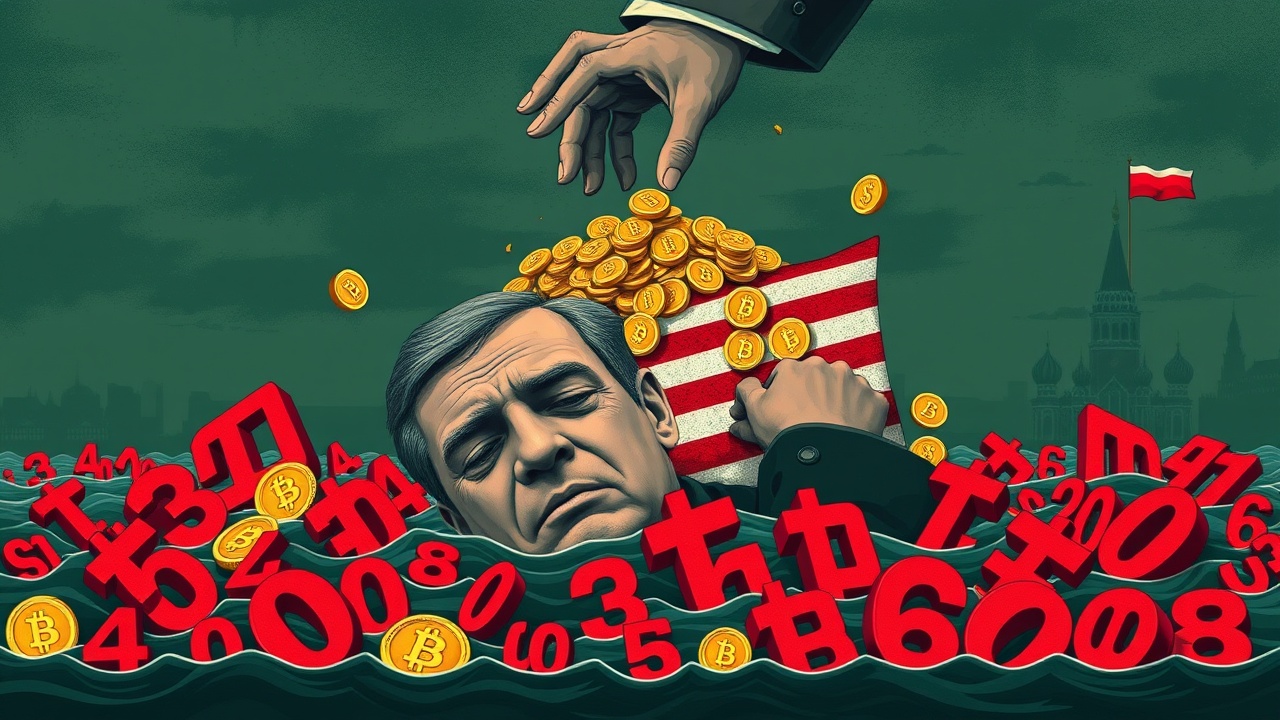U.S. Financial Strategies and Cryptocurrency
An aide to President Vladimir Putin has made claims regarding the United States’ financial strategies, suggesting that the U.S. is attempting to utilize cryptocurrencies and gold as a means to mitigate its enormous debt burden. During his concluding address at the Eastern Economic Forum held in Vladivostok, Anton Kobyakov, the Deputy Chairman of the Forum’s Organizing Committee and a key advisor to Putin, elaborated on his perspective that America’s approach is to alleviate its fiscal liabilities at the expense of other nations.
Concerns Over U.S. Debt
Kobyakov highlighted the staggering scale of U.S. debt, currently standing at $35 trillion, asserting that the so-called crypto and gold markets serve as potential alternatives to the established global currency framework.
The United States is rewriting the game regarding gold and cryptocurrency markets. Their actions are transparent; they aim to quickly resolve the waning faith in the dollar.
— Kobyakov, as translated by Russia Direct.
The advisor elaborated on his belief that the U.S. intends to transition its substantial debt into stablecoins, effectively devaluing it.
In layman’s terms, they possess a $35 trillion currency debt, which they plan to migrate into the realm of crypto, adjust its value downward, and restart.
— Kobyakov.
This perspective reflects a growing concern among various stakeholders regarding the impact of U.S. financial practices on the viability and perception of cryptocurrencies.
Impact on the Crypto Community
Meanwhile, commentary from the crypto community has noted that the rising U.S. debt crisis could paradoxically boost interest in digital assets, with Coinbase CEO Brian Armstrong positing in June that Bitcoin may ultimately rise to the status of a global reserve currency. Skepticism surrounding the United States’ deepening relationship with cryptocurrency, particularly stablecoins, has existed for some time. During the Trump administration, however, there was a noticeable shift, with regulators showing increased support for trading and the legality of digital assets pegged to fiat currencies.
In July, Trump enacted the GENIUS Act, establishing a robust framework for the issuance and trading of stablecoins. Treasury Secretary Scott Bessent earlier this year stated that he sees cryptocurrency as a tool to reinforce, rather than undermine, the predominance of the U.S. dollar.
Russia’s Shift Towards Stablecoins
In a twist of circumstances, despite Kobyakov’s criticisms, Russia has also signaled its intent to engage with stablecoins. Russian state media reported in July that a state-owned arms manufacturer is developing a ruble-backed stablecoin, which is set to debut on the Tron blockchain. While Russia imposed a ban on cryptocurrency payments in 2022, recent developments suggest a shift towards embracing digital payments for international trade. In March, the Central Bank of Russia proposed a scheme to enable affluent individuals to conduct crypto transactions, indicating a notable change in their approach to digital currencies.




